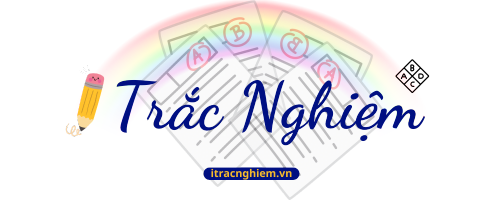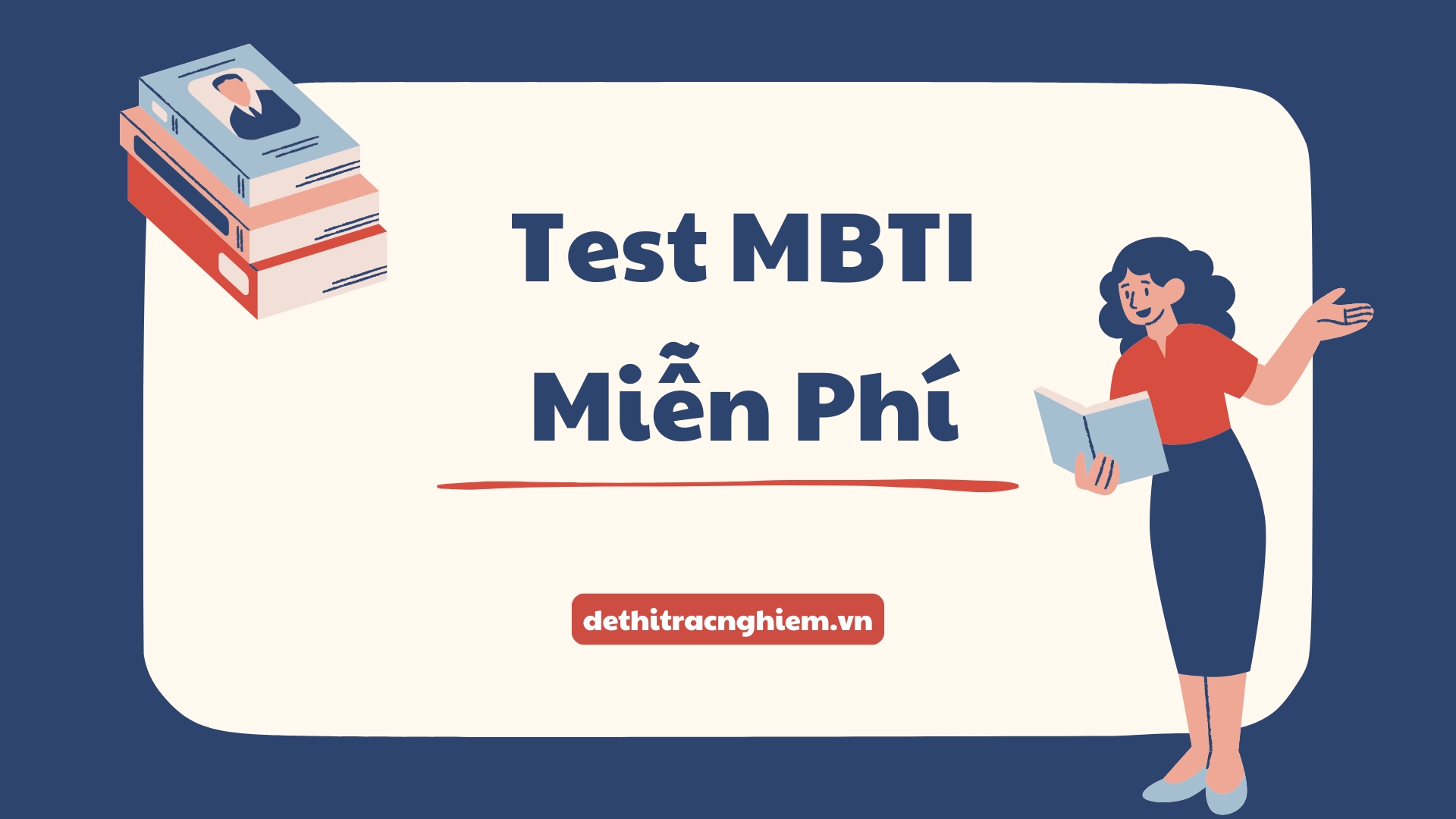Trắc nghiệm Tiếng Anh 10: Unit 5 Writing là một trong những đề thi thuộc Unit 5 – Inventions trong chương trình Tiếng Anh lớp 10. Dạng bài viết trong đơn vị này tập trung vào việc phát triển kỹ năng viết đoạn văn hoặc bài luận liên quan đến chủ đề phát minh, đồng thời rèn luyện cách trình bày ý tưởng một cách logic, mạch lạc và đúng ngữ pháp.
Để làm tốt bài Trắc nghiệm Tiếng Anh 10 Unit 5 Writing, học sinh cần nắm vững các cấu trúc câu thường dùng trong văn viết như câu bị động (Passive voice), câu so sánh (Comparatives and Superlatives), và cách sử dụng liên từ để kết nối các ý trong đoạn văn. Ngoài ra, khả năng tổ chức ý tưởng theo bố cục mở bài – thân bài – kết bài cũng là yếu tố then chốt giúp bài viết đạt điểm cao. Việc luyện tập diễn đạt các quan điểm cá nhân về tầm quan trọng của phát minh và ảnh hưởng của chúng đến cuộc sống cũng là một nội dung không thể thiếu.
Hãy cùng Dethitracnghiem.vn cùng tìm hiểu về đề thi này và tham gia làm kiểm tra ngay lập tức!
Trắc nghiệm Tiếng Anh 10 Unit 5 Writing
Câu 1: Mark the letter A, B, C, or D to indicate the sentence that is closest in meaning: Watt spent much time and money in making experiments, but nothing he tried succeeded.
A. Although Watt spent much time and money in making experiments, nothing he tried succeeded.
B. Despite his failure after trial and trial, Watt spent much time and money in making experiments.
C. As Watt spent too much time and money in making experiments, nothing he tried succeeded.
D. If Watt hadn’t spent much time and money in making experiments, anything he tried would have succeeded.
Câu 2: Mark the letter A, B, C, or D to indicate the sentence that best combines each pair of sentences given: Engineering is a process for developing solutions to problems. Inventing is a process for creating things that didn’t exist before.
A. The difference between Engineering and Inventing lies in the process they are conducted.
B. Engineering finds solutions to problem, while inventing creates things not ever existing.
C. Engineering focuses on developing solutions to problems, but inventing centers on creating new things.
D. The result of engineering is the development of solutions to problems, but that of inventing is the creation of new things.
Câu 3: Mark the letter A, B, C, or D to indicate the sentence that best combines each pair of sentences given: Inventors’ and engineers’ initial ideas rarely solve a problem. Instead, they try different ideas, learn from mistakes, and try again.
A. Instead of trying to solve a problem, inventors’ and engineers’ initial ideas are to try different ideas, learn from mistakes, and try again.
B. Rarely do inventors’ and engineers’ initial ideas solve a problem rather than try different ideas, learn from mistakes, and try again.
C. Because inventors’ and engineers’ initial Ideas rarely solve a problem, they try different ideas, learn from mistakes, and try again.
D. Even though inventors’ and engineers’ initial ideas rarely solve a problem, they try different ideas, learn from mistakes, and try again.
Câu 4: Mark the letter A, B, C, or D to indicate the sentence that best combines each pair of sentences given: The story of each invention is interwoven with that of the life of its inventor. The lives of inventors furnish materials of the highest educative value.
A. The story of each invention is interwoven with that of the life of its inventor, whose lives furnish materials of the highest educative value
B. The story of each invention is interwoven with that of the life of its inventor, because his/her life furnishes materials of the highest educative value.
C. The story of each invention is interwoven with materials of the highest educative value furnished by the life of its inventor.
D. Materials of the highest educative value furnished by the life of the inventor are interwoven with the story of each invention.
Câu 5: Mark the letter A, B, C, or D to indicate the sentence that best combines each pair of sentences given: Dr. Percy Spencer invented the microwave oven. The invention happened by accident.
A. Dr. Percy Spencer invented the microwave oven as an accident.
B. The microwave oven was Dr. Percy Spencer’s accidental invention.
C. The invention of the microwave oven by Dr. Percy Spencer was an accident.
D. Dr. Percy Spencer’s invention of the microwave oven was made in an accident.
Câu 6: Mark the letter A, B, C, or D to indicate the sentence that best combines each pair of sentences given: Michael Faraday was employed by the Royal Institution. There, he investigated the connections between electricity, magnetism and motion.
A. Michael Faraday was employed by the Royal Institution, where he investigated the connections between electricity, magnetism and motion.
B. When Michael Faraday was employed by the Royal Institution, he investigated the connections between electricity, magnetism and motion.
C. The Royal Institution employed Michael Faraday to investigate the connections between electricity, magnetism and motion.
D. After he investigated the connections between electricity, magnetism and motion, Michael Faraday was employed by the Royal Institution.
Câu 7: Mark the letter A, B, C, or D to indicate the sentence that is closest in meaning: Scientists and inventors have made significant contributions to the lives of the common people.
A. Significant contributions have been made by scientists and inventors to the live of the common people.
B. Scientists and inventors had contributed significantly to the lives of the common people.
C. The lives of the common people have been significantly constructed by scientists and inventors.
D. The contributions which scientists and inventors made to the lives of the common people was significant.
Câu 8: Mark the letter A, B, C, or D to indicate the sentence that is closest in meaning: Shockley’s book describes the research leading to the invention of the transistor.
A. Shockley’s book is a means of describing the invention of the transistor.
B. It is the invention of the transistor that is described in Shockley’s book.
C. The research leading to the invention of the transistor is described in Shockley’s book.
D. A description of the research leading to the invention of the transistor makes Shockley’s book.
Câu 9: Mark the letter A, B, C, or D to indicate the sentence that is closest in meaning: Apple MacBook is portable and versatile. I cannot afford it.
A. Although Apple MacBook is portable and versatile, 1 cannot afford it.
B. Because Apple MacBook is portable and versatile, I cannot afforsd it.
C. If Apple MacBook isn’t portable and versatile, I might afford it.
D. No matter how portable and versatile Apple MacBook is, I can afford it.
Câu 10: Mark the letter A, B, C, or D to indicate the sentence that is closest in meaning: They didn’t think Newton could do it. He was confident.
A. Because they didn’t think Newton could do it, he was confident.
B. They didn’t think Newton could do it because he was confident.
C. They didn’t think Newton could do it no matter how confident he was.
D. If they had thought Newton could do it, he would have been more confident.
Question 11: Rewrite sentences without changing the meaning: I was so busy. I couldn’t come to her birthday party.
A. I came to her birthday party so I was too busy.
B. I was too busy to come to her birthday party.
C . I was busy enough to come to her birthday party.
D. Her birthday party made me really busy.
Question 12: Rewrite sentences without changing the meaning: She intended to study music in New Jersey. Accidentally she left and studied music in New York.
A. She left her hometown in New Jersey in order to study music in New York.
B. After studying music in New Jersey, she studied music in New York.
C. She left New Jersey with the intention to study music in New York.
D. She was going to study music in New Jersey but then studied in New York.
Question 13: Rewrite sentences without changing the meaning: He sang very badly. Everyone left the room.
A. Everyone left the room so he sang badly.
B. He sang very badly so everyone left the room.
C. He sang badly as a result of everyone leaving the room.
D. He sang so badly but everyone left the room.
Question 14: Rewrite sentences without changing the meaning: His mother wanted him to be a doctor. He wanted to become a music composer.
A. His mother wanted him to be a doctor because he wanted to become a music composer.
B. His mother wanted him to be a doctor so he wanted to become a music composer.
C. His mother wanted him to be a doctor but he wanted to become a music composer.
D. If his mother wanted him to be a doctor, he wanted to become a music composer.
Question 15: Rewrite sentences without changing the meaning: Watt spent much time and money in making experiments, but nothing he tried succeeded.
A. Although Watt spent much time and money in making experiments, nothing he tried succeeded.
B. Despite his failure after trial and trial, Watt spent much time and money in making experiments.
C. As Watt spent too much time and money in making experiments, nothing he tried succeeded.
D. If Watt hadn’t spent much time and money in making experiments, anything he tried would have succeeded.
Question 16: Choose the best answer to indicate the sentence that best combines each pair of sentences given: Engineering is a process for developing solutions to problems. Inventing is a process for creating things that didn’t exist before.
A. The difference between Engineering and Inventing lies in the process they are conducted.
B. Engineering finds solutions to problem, while inventing creates things not ever existing.
C. Engineering focuses on developing solutions to problems, but inventing centers on creating new things.
D. The result of engineering is the development of solutions to problems, but that of inventing is the creation of new things.
Question 17: Choose the best answer to indicate the sentence that best combines each pair of sentences given: Inventors’ and engineers’ initial ideas rarely solve a problem. Instead, they try different ideas, learn from mistakes, and try again.
A. Instead of trying to solve a problem, inventors’ and engineers’ initial ideas are to try different ideas, learn from mistakes, and try again.
B. Rarely do inventors’ and engineers’ initial ideas solve a problem rather than try different ideas, learn from mistakes, and try again.
C. Because inventors’ and engineers’ initial ideas rarely solve a problem, they try different ideas, learn from mistakes, and try again.
D. Even though inventors’ and engineers’ initial ideas rarely solve a problem, they try different ideas, learn from mistakes, and try again.
Question 18: Choose the best answer to indicate the sentence that best combines each pair of sentences given: The story of each invention is interwoven with that of the life of its inventor. The lives of inventors furnish materials of the highest educative value.
A. The story of each invention is interwoven with that of the life of its inventor, whose lives furnish materials of the highest educative value
B. The story of each invention is interwoven with that of the life of its inventor, because his/her life furnishes materials of the highest educative value.
C. The story of each invention is interwoven with materials of the highest educative value furnished by the life of its inventor.
D. Materials of the highest educative value furnished by the life of the inventor are interwoven with the story of each invention.
Question 19: Choose the best answer to indicate the sentence that best combines each pair of sentences given: Dr. Percy Spencer invented the microwave oven. The invention happened by accident.
A. Dr. Percy Spencer invented the microwave oven as an accident.
B. The microwave oven was Dr. Percy Spencer’s accidental invention.
C. The invention of the microwave oven by Dr. Percy Spencer was an accident.
D. Dr. Percy Spencer’s invention of the microwave oven was made in an accident.
Question 20: Choose the best answer to indicate the sentence that best combines each pair of sentences given: Michael Faraday was employed by the Royal Institution. There, he investigated the connections between electricity, magnetism and motion.
A. Michael Faraday was employed by the Royal Institution, where he investigated the connections between electricity, magnetism and motion.
B. When Michael Faraday was employed by the Royal Institution, he investigated the connections between electricity, magnetism and motion.
C. The Royal Institution employed Michael Faraday to investigate the connections between electricity, magnetism and motion.
D. After he investigated the connections between electricity, magnetism and motion, Michael Faraday was employed by the Royal Institution.




